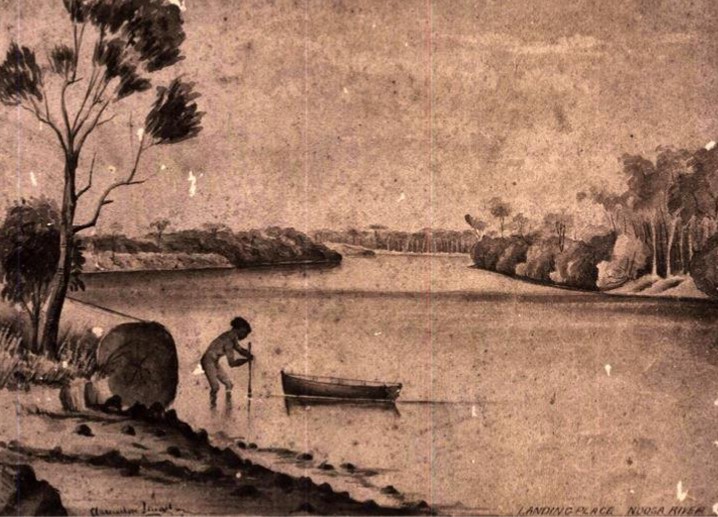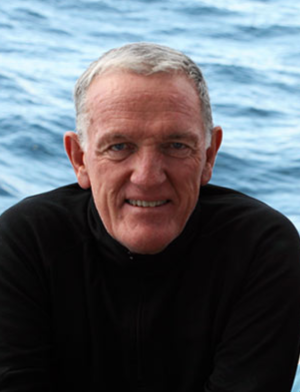The Noosa Council Chambers stand on the Noosa River near Tewantin on a prime site where the river turns east after its southward run out of the hills.
Up to the 1860s this was the site of a giant oyster shell midden – about half the height of today’s Council Chambers and with a similar footprint. The river was strewn with oyster reefs, as were the banks to the north and east.
Similar-sized middens, from annual oyster feasts by the Kabi Kabi, were at the other end of Tewantin village and on Lake Weyba – the ‘Lions of Tewantin’ – with smaller middens in Noosaville and on Hayes Island. Now oysters are functionally extinct from the system, the middens no longer there, and the rock structures that anchored oyster conglomerations largely gone.

Exploitation of Noosa’s aquatic environment has been wide and sustained since European settlement. Hinterland clearing allowed top soil to bleed into the lakes and river system. Sport anglers took iconic fish species in quantities unimaginable today. In the early 1960s there were massive catches of prawns. Sea grasses and reefs were severely depleted by beam trawling. Studies of the benthos (the river bottom) show alarming species loss over 20 years.
Whether from exploitation, survival, or ignorance there was a naive assumption that the prodigiously rich river system would forever provide bumper catches of all aquatic species. Now, just as forests are being protected and replenished, steps are being taken to redress damage to the river system.
This month on the site of the Council Chambers’ midden, a ‘shellabration’ marked the new reef construction there. It opened with a Kabi Kabi smoking ceremony honouring the generations of indigenous ancestors who celebrated on the site. Kabi Kabi elder, Uncle Fred Palin outlined indigenous occupation and practices and Kabi Kabi commitment to continued involvement in reef and system restoration. There’s another restored reef at Goat Island and two in Noosa Sound. Around 3300 tonnes of locally quarried rock, supplemented with five and a half tonnes of shell, anchor the reefs. Two tonnes of the shell will be seeded with local oyster spat inserted into the rock structures.
The oyster ecosystem restoration project – originally termed Bring Back the Fish (BBTF) – is likely over time to be judged as important in further shaping Noosa’s environmental credentials as other Noosa milestone projects.
Noosa Parks Association (NPA) initiated many of the milestones, reflecting NPA’s ethos of habitat protection and restoration. Bring Back the Fish is another NPA initiative. It came at last after more than 50 years’ focus by Noosa Council, NPA and the community on terrestrial conservation, while degradation of the river system was largely overlooked.
By then The Thomas Foundation (TTF) – solely funded by Noosa residents David and (the late) Barbara Thomas – was funding The Nature Conservancy’s ambitious Great Southern Seascapes bay and estuary restoration program. Against this background, then NPA president Michael Gloster brought together the University of the Sunshine Coast, the University of Queensland, TTF and NPA in a partnership to consider aquatic restoration here.
The ‘shellabration’ came more than eight years after the Noosa Biosphere Reserve Foundation embraced Bring Back The Fish as a ‘big idea’ and joined the funding partnership.
Questions about the science and experience on which it was based were satisfied by TNC’s steadily growing knowledge of re-established shellfish reefs in Australia and elsewhere – including at scale in Chesapeake Bay, Florida and New York where a high school project plans to seed 1 billion oysters into 14 reefs by 2035. There divers describe the sludge as ‘black mayo’ but visibility is already improving.
Measurable outcomes were emerging from reef restorations, including cleaner water, increases in marine species and foreshore protection.
Florida’s TNC marine Manager Anna Birch has this to say:
“The health of our estuaries hangs in the balance and the importance of restoring oyster reefs cannot be over emphasised.”
“Oysters are the quiet unsung heroes of our estuaries working hard every day to protect our coasts, clean up our waters, and feed and shelter crabs, shrimp and other species.”
Here the pathways to terrestrial conservation permits were well known and frequently pursued, but the pathways to marine conservation were unmapped. Delays resulted. Further trials were commissioned.
There was a council election in 2020 during which the project was portrayed by some as contentious, despite the evidence of benefits. Since the election there has been unwavering support for the project from the majority of Noosa Councillors. It was 2021 before NPA’s experience and contacts finally unlocked the last State approvals.
Now the first reefs are in the water and as Deputy Mayor Frank Wilkie said:
“Once informed of the impacts of human activity on our community’s natural assets, doing nothing is not an option.”
“Noosa Council is proud to support evidence and science-backed initiatives like this that aim to restore and leave our natural assets in a better shape for future years.
“It’s a privilege to be part of something greater than ourselves that has the real potential to set the Noosa River on a course towards greater aquatic health”.

